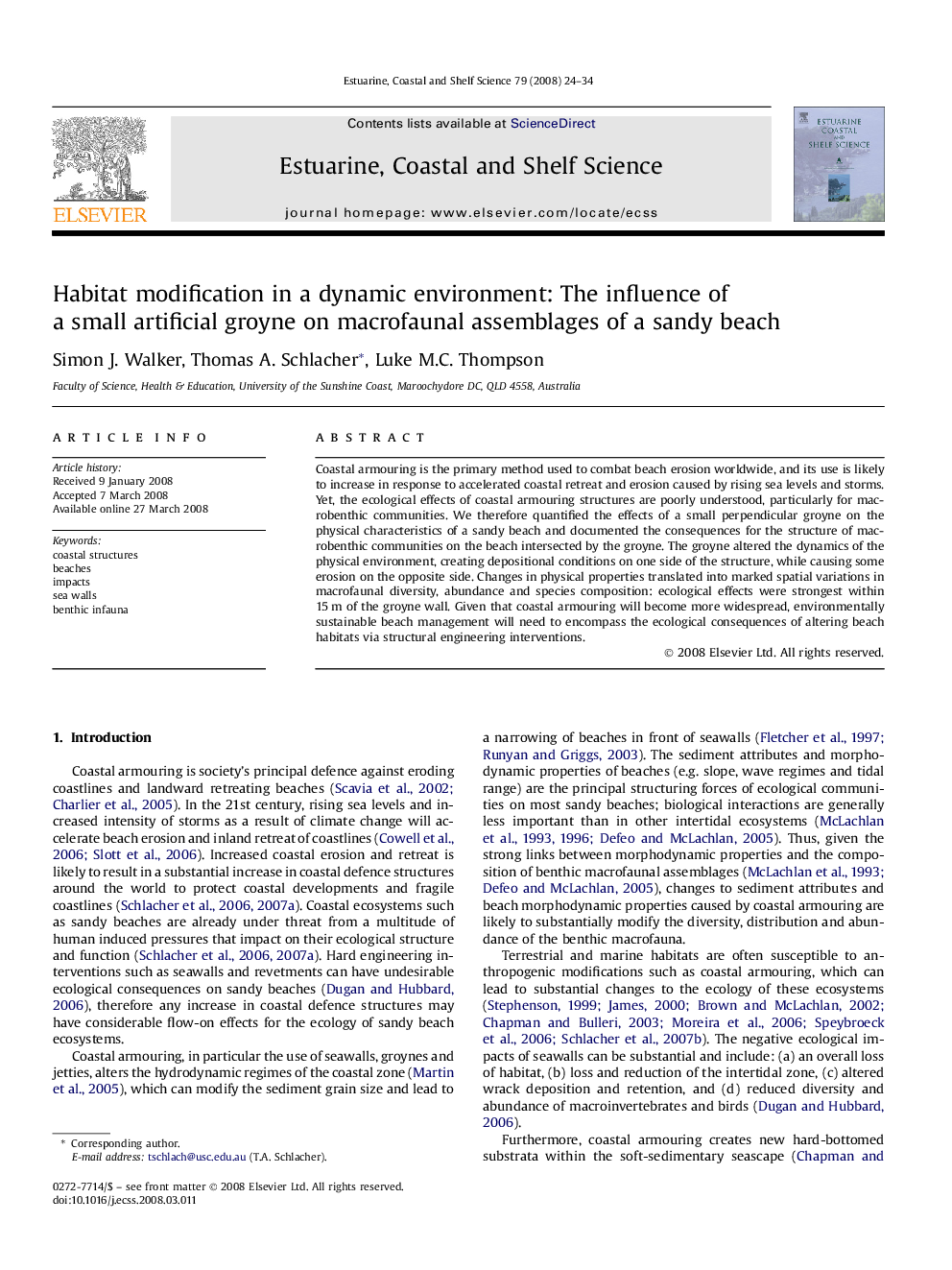| Article ID | Journal | Published Year | Pages | File Type |
|---|---|---|---|---|
| 4541561 | Estuarine, Coastal and Shelf Science | 2008 | 11 Pages |
Coastal armouring is the primary method used to combat beach erosion worldwide, and its use is likely to increase in response to accelerated coastal retreat and erosion caused by rising sea levels and storms. Yet, the ecological effects of coastal armouring structures are poorly understood, particularly for macrobenthic communities. We therefore quantified the effects of a small perpendicular groyne on the physical characteristics of a sandy beach and documented the consequences for the structure of macrobenthic communities on the beach intersected by the groyne. The groyne altered the dynamics of the physical environment, creating depositional conditions on one side of the structure, while causing some erosion on the opposite side. Changes in physical properties translated into marked spatial variations in macrofaunal diversity, abundance and species composition: ecological effects were strongest within 15 m of the groyne wall. Given that coastal armouring will become more widespread, environmentally sustainable beach management will need to encompass the ecological consequences of altering beach habitats via structural engineering interventions.
